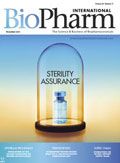Good Documentation Practice: Saving Data for the Long Term
Siegfried Schmitt, principal consultant, PAREXEL, discusses how to ensure archive records can be retrieved.
Siegfried Schmitt, principal consultant, PAREXEL, discusses how to ensure archive records can be retrieved.
Q. We will be replacing some instruments in our laboratory, and the data on the equipment will be archived. We are looking for a low-cost solution, such as cloud-based archives, to accomplish this while remaining compliant. Can you offer any recommendations?
A. Your approach to archive records that are not required to run the daily business is good business sense. It is also compliant with European regulations, which state: “Data may be archived. This data should be checked for accessibility, readability and integrity. If relevant changes are to be made to the system (e.g., computer equipment or programs), then the ability to retrieve the data should be ensured and tested” (1). The corresponding US regulations can be found in 21 Code of Federal Regulations (CFR) Part 211.180 (c) and Part 11, which detail essential records and retention periods. You should note that the US requirements of 21 CFR Part 11 also apply to archived data and records (2). In general, the US and EU regulations for records are very similar.
What do these requirements mean for you? Once you have transferred the data to your archive (e.g., a cloud-based archive), you will confirm if the data can be accessed. This exercise must be repeated, as it is necessary to verify that you can actually access the data throughout the data lifecycle, which is typically several years (often in the range of 5–15 years). For this reason, it is essential to maintain the access information somewhere safe for several years.
Laboratory data may be in some proprietary format depending on the instrument on which they were generated. If this is the case, consider how the data can be read in years to come. It is neither practical nor feasible to maintain software programs that would enable these data to be read. It is highly unlikely that the software will still run on operating systems many years from now, nor will there be many operators who would know how to use the software. A potential solution may be to standardize the data, transferring it into a generic data format.
A key issue with archived data is maintaining a description or inventory of where the data belongs. Just because a file is named ‘injection 01 29 Oct 2011,’ this does not tell someone years from now that these data belong to the impurity profile for a stability sample for product xyz in month three for an accelerated study. How will you know what the data are, whether they are complete, and who created them and when? This demonstrates that there is no benefit in ‘dumping’ data in an archive--this must be done with the same diligence needed for archiving a paper document.
It’s also important to consider how long you will need to store the data and what your defined retention periods are. It is well known that paper can be stored for hundreds of years and will still be legible. Experience with electronic archives extends to years, at best decades. This is where you will have to keep in mind the longevity of the electronic archive. Low-cost solutions may be tempting, but is there sufficient assurance that these will still exist at the end of your data lifecycle?
Your data are valuable, so you will want to be able to access and retrieve them as you please. Therefore, you will need to know where your data are located. Cloud-based archives may be perfectly appropriate for your purpose, but only if you have appropriate controls over their location and access to your data. If the data were in a cloud with lax controls, who might have access to your data? What happens if your archive (e.g., cloud) changes ownership?
By all means, explore available archiving options, including the cloud, but it is crucial to ensure your data doesn’t become another example of what is often widely labeled as the ‘digital landfill.’
References
1. European Commission, EudraLex, The Rules Governing Medicinal Products in the European Union, Vol. 4, EU Guidelines for Good Manufacturing Practice for Medicinal Products for Human and Veterinary Use Part 1, Annex 11: Computerised Systems.
2. FDA, Guidance for Industry Part 11, Electronic Records; Electronic Signatures-Scope and Application (FDA, August 2003).
Article DetailsBioPharm International
Vol. 28, No. 11
Page: 48. 53
Citation: When referring to this article, please cite it as “Good Documentation Practice: Saving Data for the Long Term,” BioPharm International28 (11) 2015.

MHRA Approves GSK Therapy Combinations for Multiple Myeloma
April 21st 2025Belantamab mafodotin is approved in combination with bortezomib plus dexamethasone in patients who have had at least one prior therapy, and in combination with pomalidomide plus dexamethasone for those who have had a prior therapy including lenalidomide.